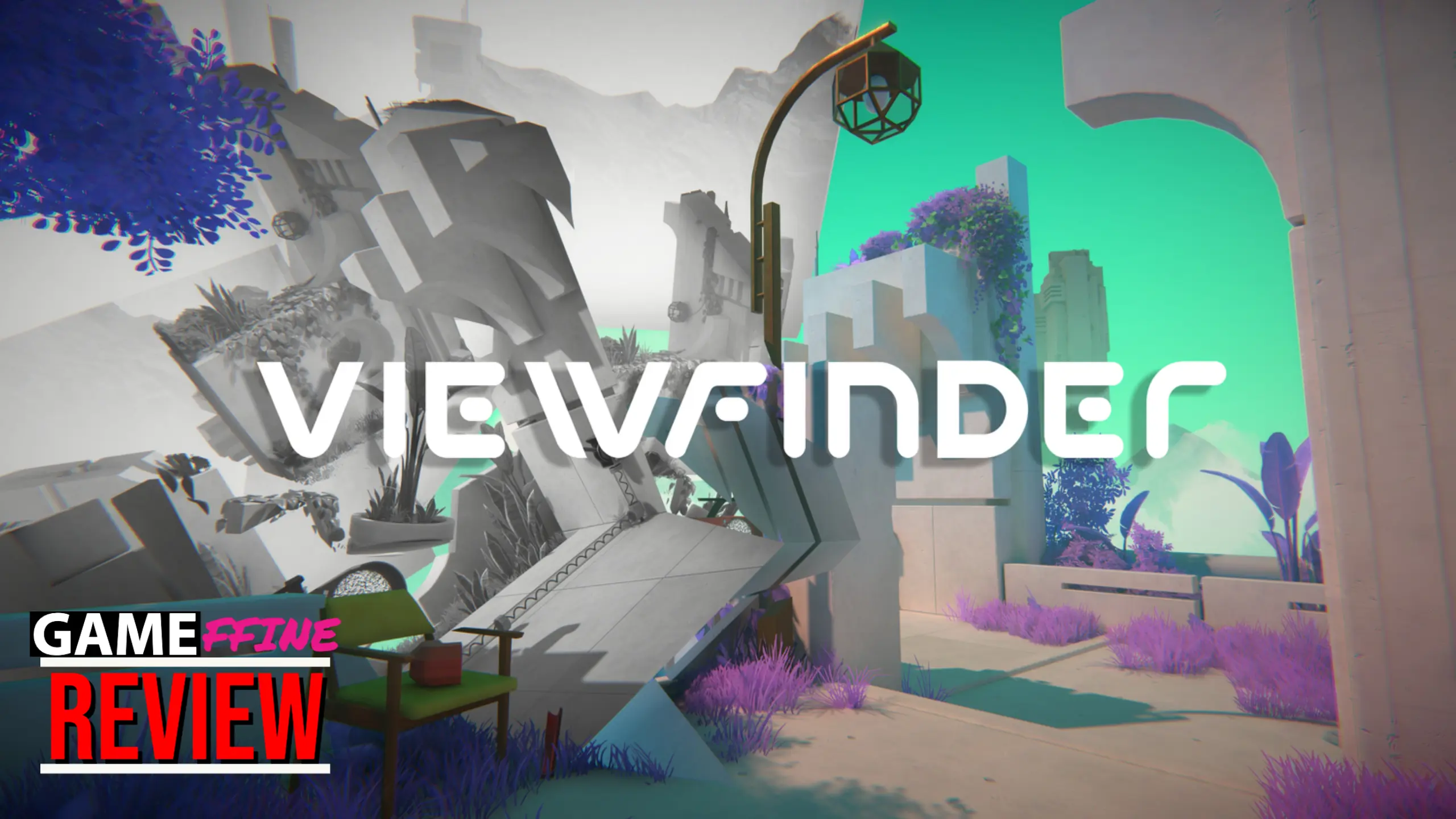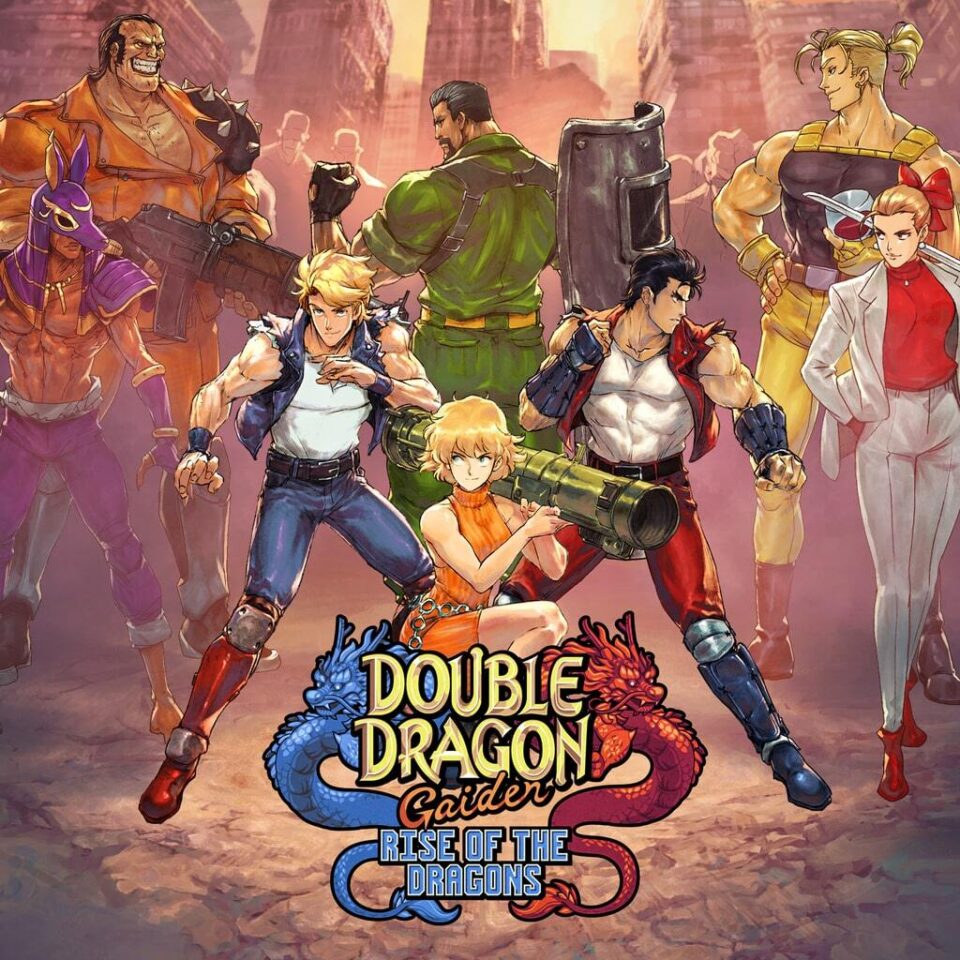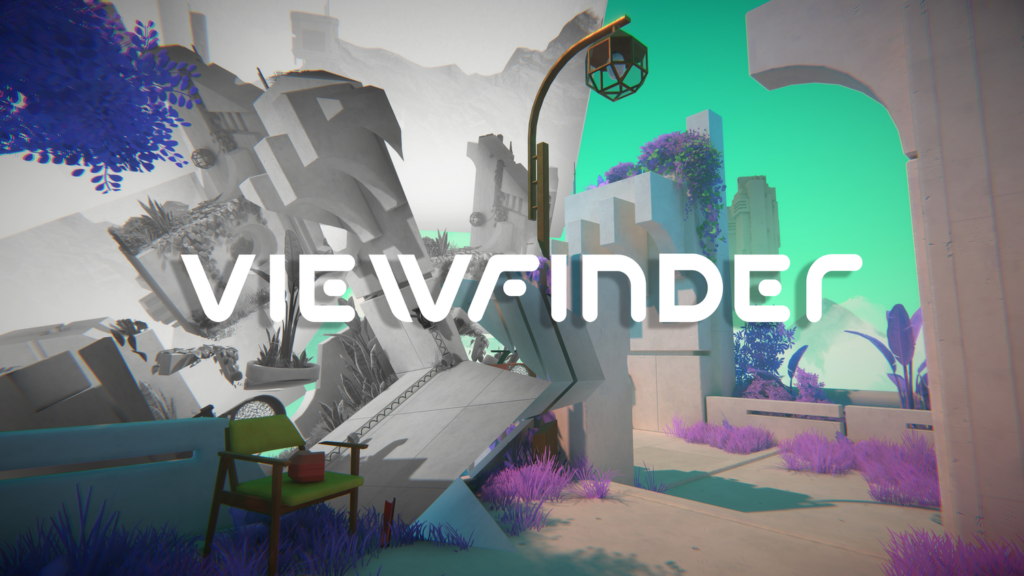
When the Polaroid instant camera first became commercially available in 1948 (selling out in minutes at a department store in Boston), it instantly revolutionized creativity on an individual amateur level. Suddenly, the seemingly magical act of capturing reality on paper became democratized and instant (well, it did take 50 seconds) – now anyone could share the world as they saw it, their perception of it, with others. And what is perception but story?
Viewfinder, the debut game from Sad Owl Studios and published by Thunderful Publishing (Planet of Lana, SteamWorld, Cursed to Golf), not only takes the Polaroid’s visual aesthetic but also uses its idea of ‘perception to instant reality’ as a super neat puzzle mechanic, even telling a powerful story about perception and the transience of our world to boot. Let’s get into it!
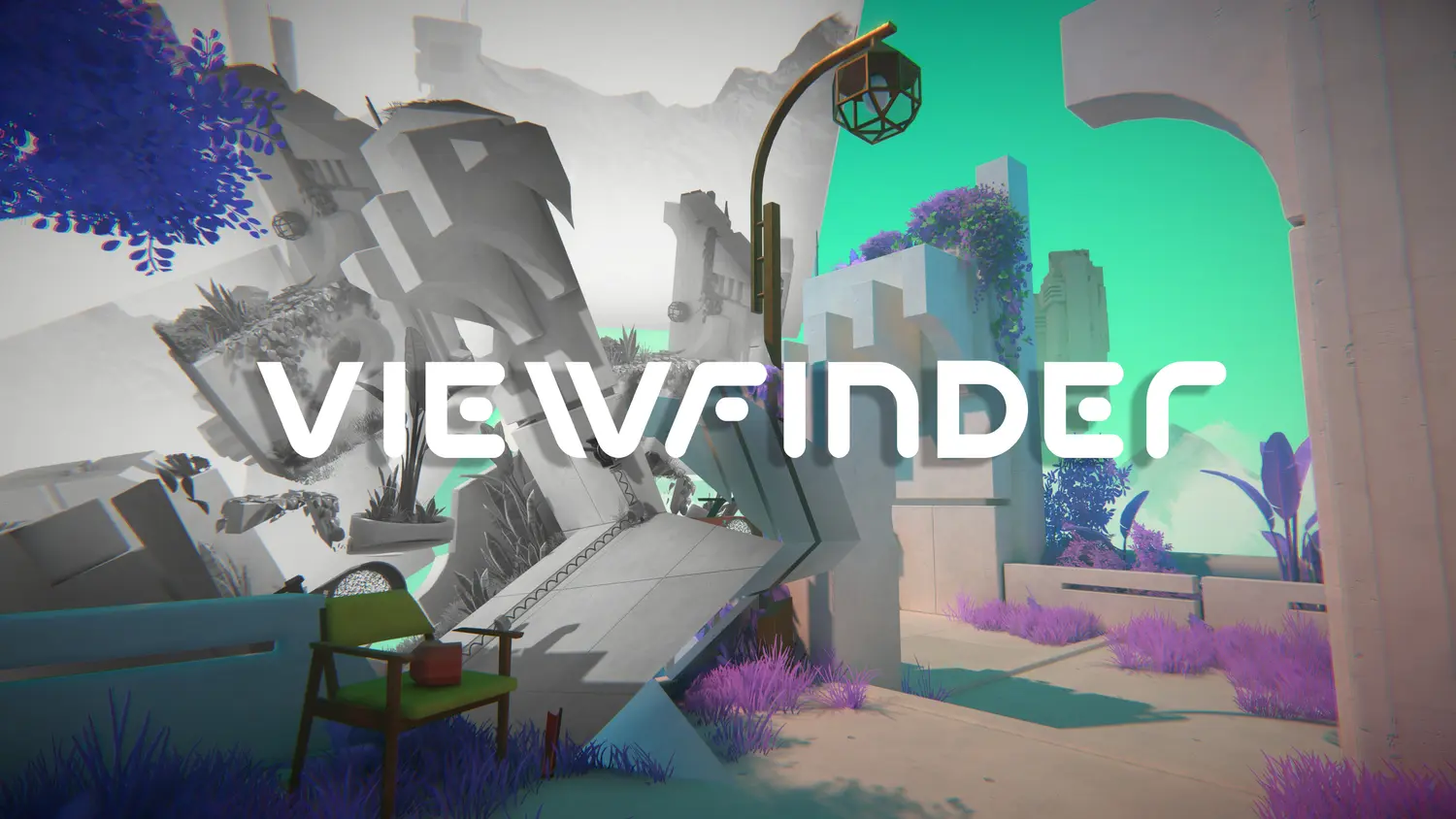
Perceptions Into Reality
The meat of Viewfinder’s 4 hours of game time is, of course, the puzzles themselves. And boy are they clever! Every level basically consists of figuring out how to get to the teleporter to the next level, a lot of these needing to be powered up by batteries or lever switches.
Reminiscent of Pillow Castle’s 2019 title Superliminal, solving puzzles involves playing with perspective. Viewfinder primarily does this through Polaroid photographs that you can rotate and position in relation to the environment to create new ones or overwrite existing ones. A simple example of this would be using a 2D photo of a bridge to make an actual 3D pathway to the teleporter.
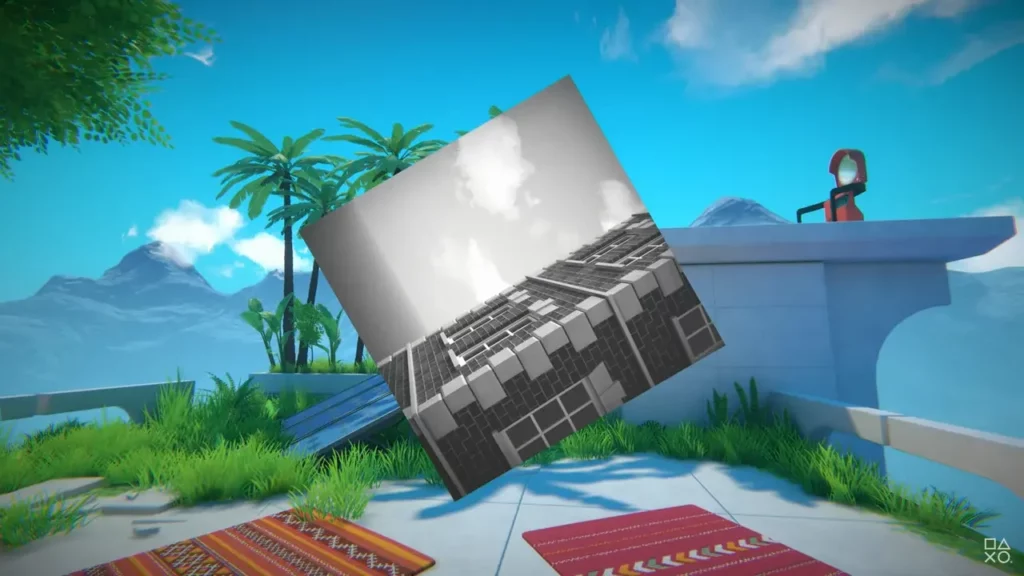
While at first, the puzzles are simple (in fact, the game had me worried it would end up being too easy), Viewfinder iterates on this mechanic in some very clever, neat ways and at a good pace, avoiding high-difficulty spikes. The rewind mechanic especially makes everything infinitely faster, allowing the player to try out different things almost as soon as they can think of them, then reverse and try something else instantly, bypassing any frustration of a failed solution.
Once you get access to a camera of your own (through a photograph of one of course), the game lets you take photographs of anything from any angle, allowing for some creative and player-unique solutions to the puzzles (the creative freedom here had a delicious hint of the newer Zelda games, though of course not nearly to that extent). The way some of the later levels iterate on this concept is truly gleeful fun, the selfie mechanic especially comes to mind.
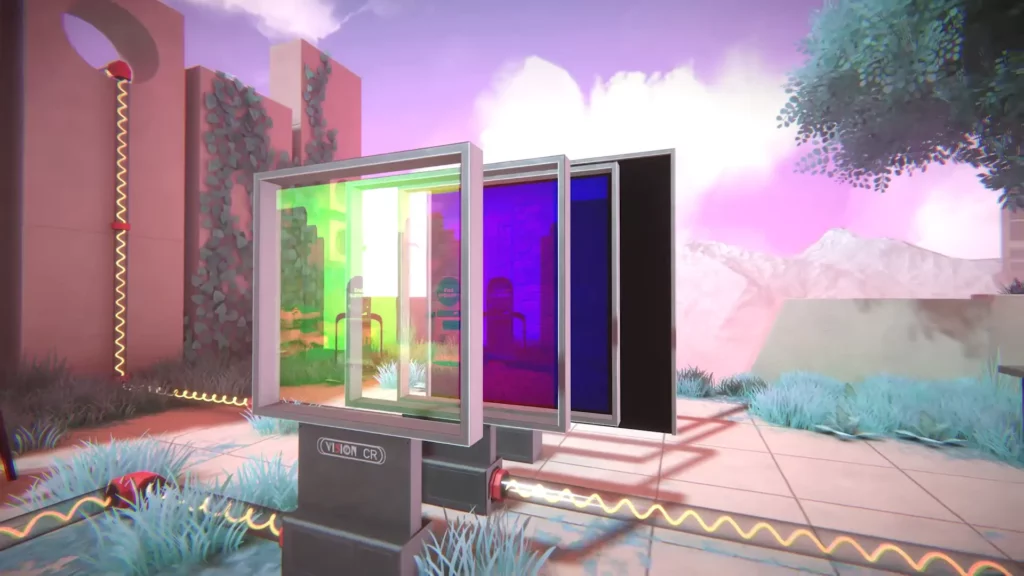
The game is divided into 5 hub worlds, one for each of the founders and two for Mirren, each one somewhat reflecting the founder’s personality, though to a regrettably low extent. Each world being more in tune with the founder’s distinct personality could’ve been an incredible way of developing the characters, which is where the game sadly falls short, but more on that later. Optional challenges exist in most of the hub worlds as well, in addition to collectibles for the collectors (ducklings in the first, magnets in the second, and so on), which add a bit of playtime to Viewfinder’s short 4-hour lifespan.
Despite the short playtime (an unfortunate staple of most good puzzle games), Viewfinder is more than worth playing through – the puzzles rarely if ever get frustrating, and the eureka moments are delicious and compel you to keep playing. And from a programming perspective, I can’t stress how insanely cool and admirable the photograph-to-reality mechanic is and how seamlessly and instantly it all works with no hiccups.
My forays into Unity and game development give me no insight into how the hell they managed to pull off such a cool mechanic – overwriting the geometry of a world and converting 2D photographs to 3D environments with such physical accuracy. It’s absolutely fantastic from a design perspective and can’t be overstated – a small miracle of programming!
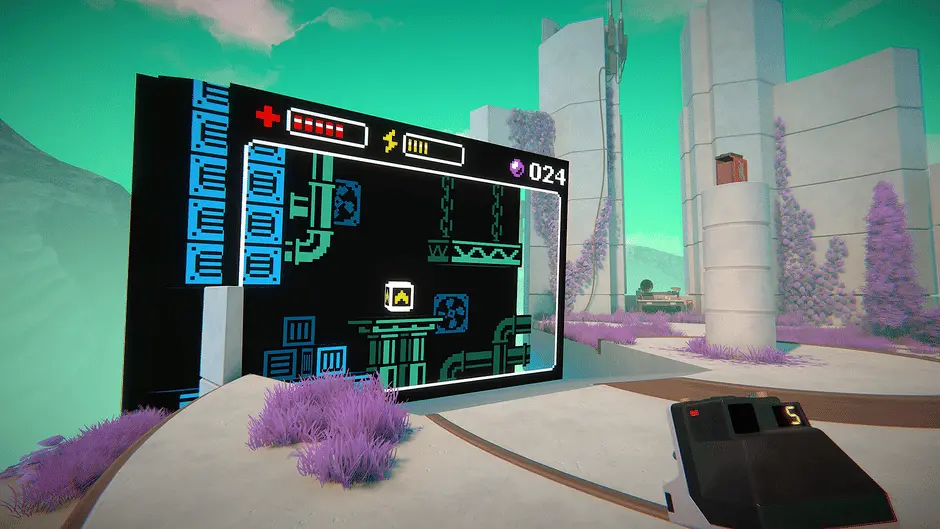
However, I do wish Viewfinder featured a level creator – imagine the countless innovative and interesting puzzles the player base would undoubtedly come up with, especially with such a staggeringly cool mechanic! Not to mention how much that would increase the lifespan of the game. Here’s hoping something like that is added at some point.
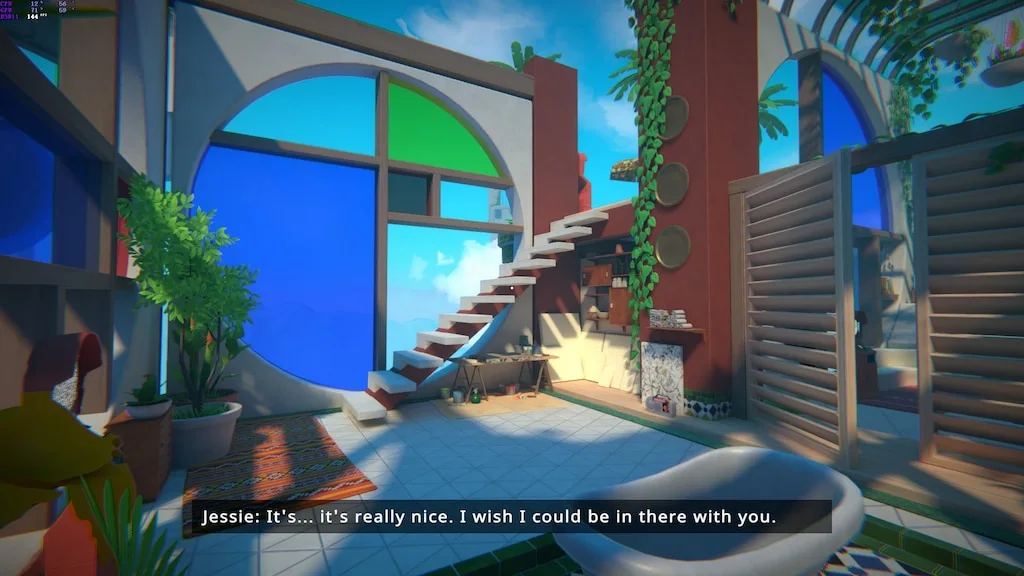
Capturing the Polaroid Aesthetic
In the visual department, Viewfinder is a simplistic but pretty game for the most part and does justice to the Polaroid aesthetic in its menus (the photo reels in the pause menu are a nice touch) and the different filters you’ll find as you progress, each one prettier than the last and adding some much-needed visual variety.
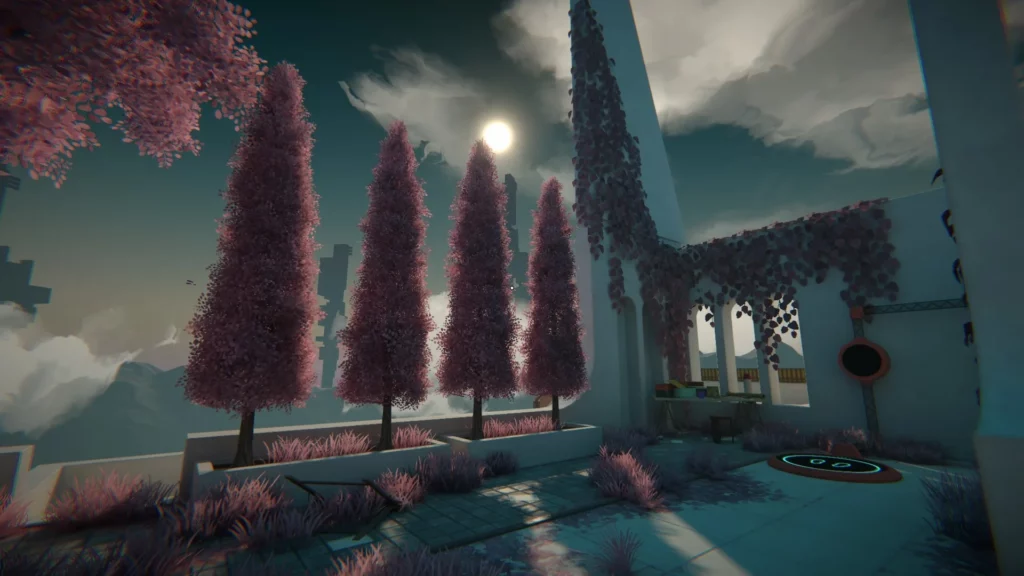
I say much-needed because 4 of the 5 hub worlds are pretty much identical visually – all levels are basically terraces in the sky, cuboid structures, white walls, and overgrown greenery, with only silhouettes of mountains and other structures in the distance for company. It’s a cool setting at first, but quickly becomes rote – some variety in the different worlds would’ve been so very welcome and added so much more personality than there is!
The loading animation – going from a teleporter’s circular screen to the next level as the circle expands, is neat and seamless – no loading screens or anything to interrupt the puzzle-solving.
There’s not much more to say about the visuals of the game. Apart from a few instances here and there that look standout gorgeous, most of the environments look pretty identical – one screenshot of the game tells it all, unfortunately. The last hub world, however, with its multiple filter-changing doorways, does have a cool gimmick that adds some flavor and spectacle to the visuals, which was much appreciated.

The sound design is serviceable but nothing extraordinary, The voice acting is just fine, and the music is mostly ambient, conducive to problem-solving (the soothing piano and light drums of the first world, the jazzy tune of the third come to mind), with some variety between the hub worlds. Nothing to write home about, but good enough, and nothing annoying. The credits song, on the other hand, is quite a bop.
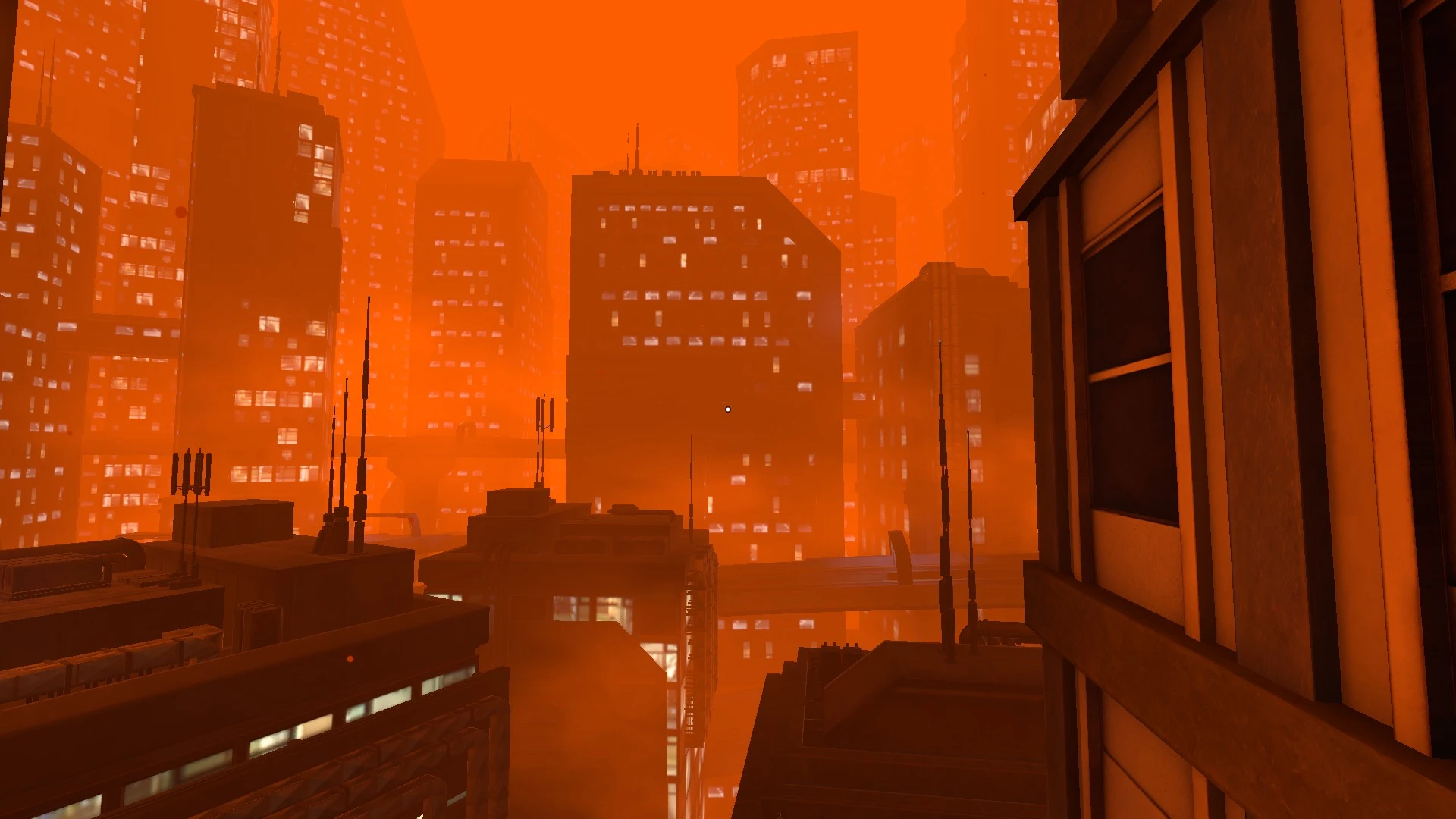
Modern Problems Require Virtual Solutions
On to Viewfinder’s most disappointing aspect – it’s narrative. Viewfinder being a straightforward puzzle game at its core, the story does take somewhat of a major backseat, in terms of developmental focus and production value. Despite this palpable lack in the storytelling department, though, the game still has a surprisingly intriguing premise.
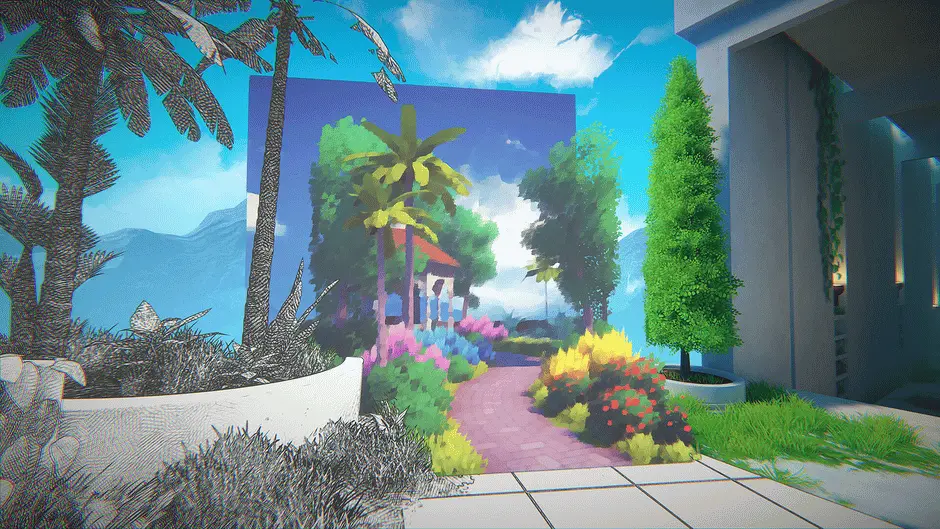
Upon loading into the game, you’re immediately dropped into what you soon learn is a simulation left behind by a group of scientists trying to engineer a solution to climate change. A small foray into the real world later reveals red skies, dead buildings, and a hellish, smoggy atmosphere. Yup, the world definitely seems to have gone to dystopian shit.
As you progress through levels, Loggagraphs (the game’s version of gramophones), sticky notes, notebooks, and schematics in the environment gradually provide bits of story – about the founders of the simulation, the challenges they face, and their progress towards finding a solution. The scientists themselves, however, are nowhere to be seen, with only the virtual worlds each of them have created left to tell their tales.
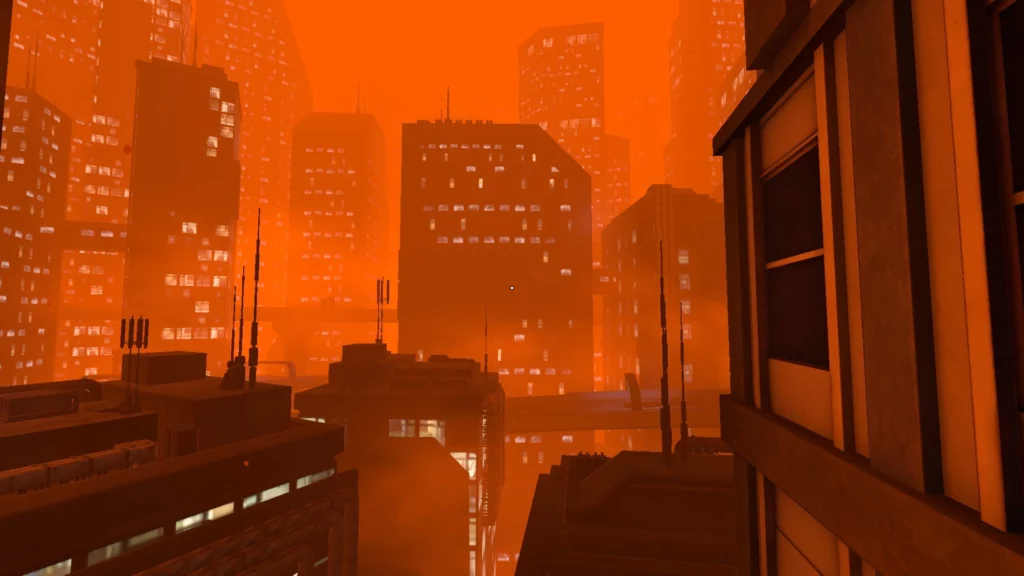
The only other characters are Jessie – a voice in your ear that really doesn’t do much of anything beyond providing a bit of background and guidance in the tutorial – and a virtual (yes, pettable) cat (Cait) that gives you bits of lore and encouragement. Cait’s voice acting is good and builds the story, but Jessie’s entire character could’ve been omitted and nothing lost. The writing and voice acting for her are only okay and don’t add much of anything to the experience, and the character you play as is mute, merely serving as a vessel for the player.
None of the founders are really interesting either, which is a true shame. As I hinted at earlier, each of the hub worlds having been created by each of the founders invites environmental storytelling and character development. Unfortunately, except for a couple of instances (one where you explore a painting done by a founder comes to mind), Viewfinder does not exploit this idea to anywhere near its potential, and so, the characters are disappointingly one-dimensional.
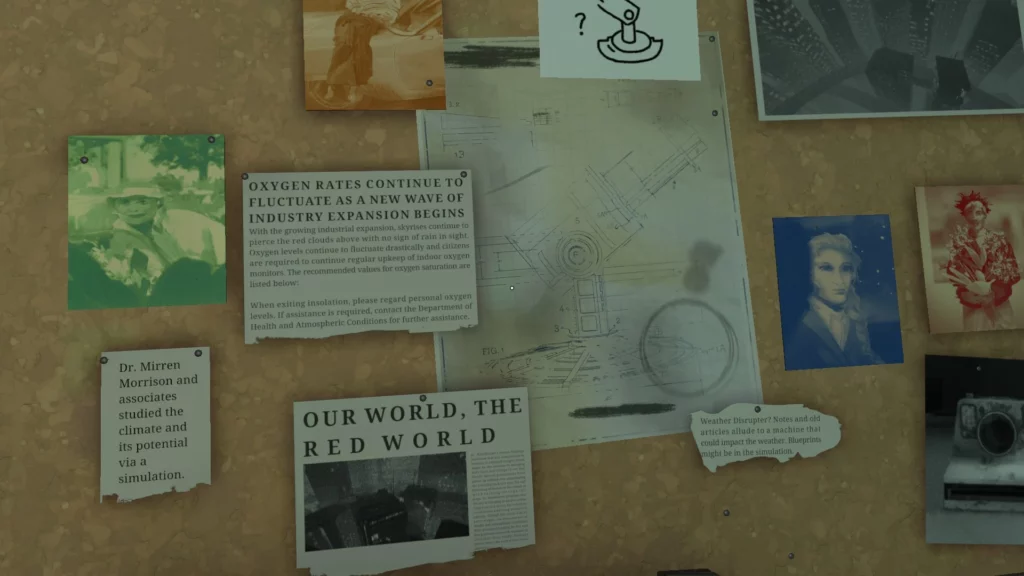
Well, except for one – Mirren. Her story, which I’ll leave to you to discover, serves as the backbone of Viewfinder’s overall message and is a compelling one about the burden of infectious ambition, the striving for perfection and individual greatness, and at what cost they may come. The question Viewfinder seems to ask, and answer, is whether a single person can conveniently be left to find a quick and easy solution to one of our world’s biggest problems – a grand global problem impacting and caused by a large community. In a world where everyone’s out for themselves and their own short-term gains, where does that leave the world? What would it take to save it?
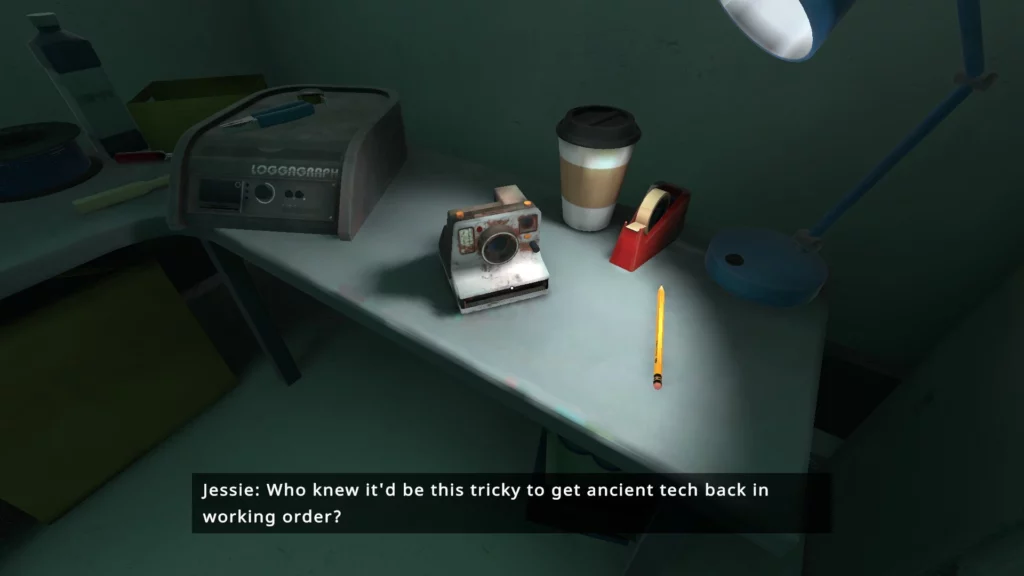
All in all, the premise is engaging but while the narrative concludes beautifully, the sparse building up to it and the extremely lacking character development ultimately undermine what could’ve been a much more powerful story. Most of the sticky notes, notebooks, and schematics, though building up anticipation, serve little to no purpose when they could’ve gone a long way toward expanding the characters, their motivations, and the world itself.
Still, despite the lackluster character development and world-building, Viewfinder tells its story well enough, weaving together small story fragments into a beautiful tale that culminates into a satisfying ending.
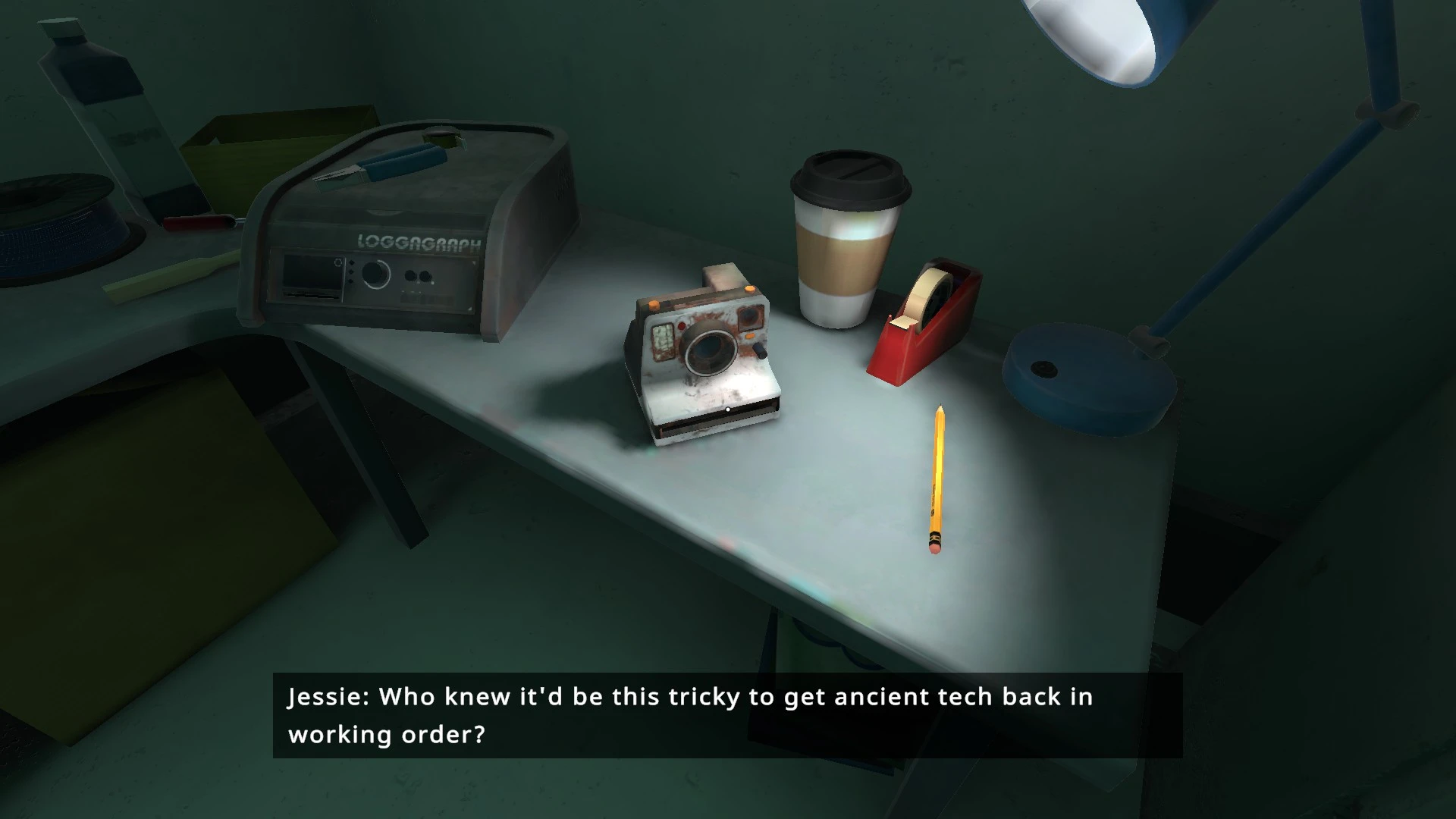
Real Talk
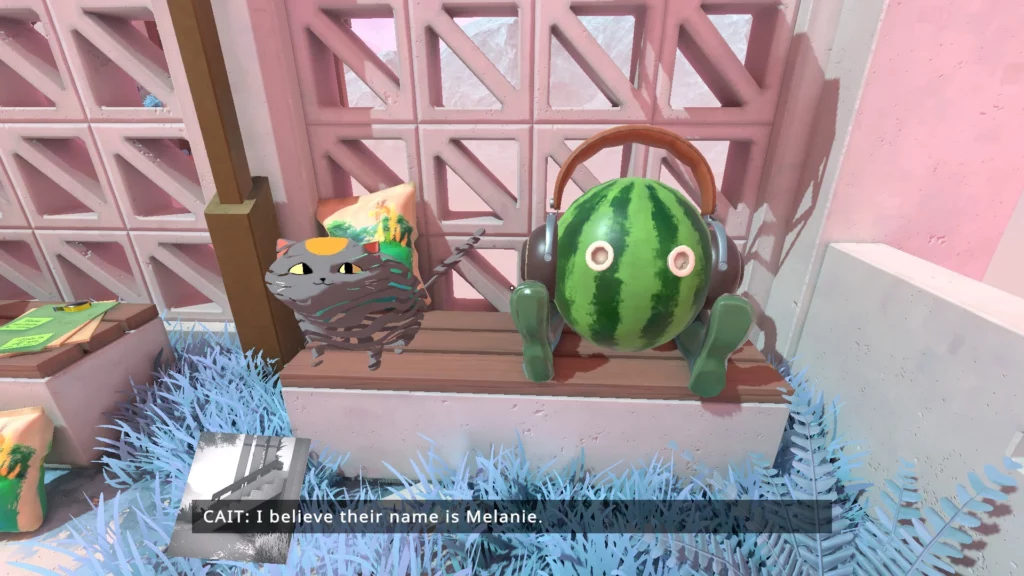
All in all, Viewfinder is a fantastic puzzle game that makes use of its incredible 2D-to-3D, photograph-to-environment mechanic in some fascinating and clever ways. The pace of difficulty is near-perfect, and finding solutions rarely gets frustrating thanks to the quick rewind mechanic. Narratively, although Viewfinder’s premise is promising, it falls short in execution. Still, the story that’s there is still plenty interesting, and who plays a puzzle game for its story anyway!
FINAL RATING: 80/100
